FAUNA OF MALYE KURILY REFUGE
Biodiversity of rivers and streams in Malye Kurily Refuge is high. Besides fish species and other water species there is a high diversity of invertebrates that inhabit river banks.
When pink salmon (Oncorhynchus gorbuscha) runs, various animals connect to the food chain of this ecosystem: foxes, white-tailed eagles (Haliaeetus albicilla), grey herons (Ardea cinerea), crows, many predator and scavenger insects (ground beetles, carrion beetles, rove beetles, flies, ants and others).
When pink salmon (Oncorhynchus gorbuscha) runs, various animals connect to the food chain of this ecosystem: foxes, white-tailed eagles (Haliaeetus albicilla), grey herons (Ardea cinerea), crows, many predator and scavenger insects (ground beetles, carrion beetles, rove beetles, flies, ants and others).
Biodiversity of rivers and streams in Malye Kurily Refuge is high. Besides fish species and other water species there is a high diversity of invertebrates that inhabit river banks.
When pink salmon (Oncorhynchus gorbuscha) runs, various animals connect to the food chain of this ecosystem: foxes, white-tailed eagles (Haliaeetus albicilla), grey herons (Ardea cinerea), crows, many predator and scavenger insects (ground beetles, carrion beetles, rove beetles, flies, ants and others).
When pink salmon (Oncorhynchus gorbuscha) runs, various animals connect to the food chain of this ecosystem: foxes, white-tailed eagles (Haliaeetus albicilla), grey herons (Ardea cinerea), crows, many predator and scavenger insects (ground beetles, carrion beetles, rove beetles, flies, ants and others).
Shikotan Island and the Lesser Kuril Ridge
One-mile water area around Shikotan Island and the Lesser Kuril Ridge is a part of the refuge.
It is inhabited by different marine animals: mammals (whales, dolphins, harbour porpoises (Phocoena phocoena), steller sea lions (Eumetopias jubatus), sea otters (Enhydra lutris), northern fur seals (Callorhinus ursinus), seals), sea birds (auks, skuas, tubenoses, albatrosses, northern storm petrels, seagulls, haliplids and others), сrustaceans, echinoderms, molluscs, hydrozoans and others.
It is inhabited by different marine animals: mammals (whales, dolphins, harbour porpoises (Phocoena phocoena), steller sea lions (Eumetopias jubatus), sea otters (Enhydra lutris), northern fur seals (Callorhinus ursinus), seals), sea birds (auks, skuas, tubenoses, albatrosses, northern storm petrels, seagulls, haliplids and others), сrustaceans, echinoderms, molluscs, hydrozoans and others.
Shikotan Island and the Lesser Kuril Ridge
One-mile water area around Shikotan Island and the Lesser Kuril Ridge is a part of the refuge.
It is inhabited by different marine animals: mammals (whales, dolphins, harbour porpoises (Phocoena phocoena), steller sea lions (Eumetopias jubatus), sea otters (Enhydra lutris), northern fur seals (Callorhinus ursinus), seals), sea birds (auks, skuas, tubenoses, albatrosses, northern storm petrels, seagulls, haliplids and others), сrustaceans, echinoderms, molluscs, hydrozoans and others.
It is inhabited by different marine animals: mammals (whales, dolphins, harbour porpoises (Phocoena phocoena), steller sea lions (Eumetopias jubatus), sea otters (Enhydra lutris), northern fur seals (Callorhinus ursinus), seals), sea birds (auks, skuas, tubenoses, albatrosses, northern storm petrels, seagulls, haliplids and others), сrustaceans, echinoderms, molluscs, hydrozoans and others.
Shikotan Island and the Lesser Kuril Ridge
One-mile water area around Shikotan Island and the Lesser Kuril Ridge is a part of the refuge.
It is inhabited by different marine animals: mammals (whales, dolphins, harbour porpoises (Phocoena phocoena), steller sea lions (Eumetopias jubatus), sea otters (Enhydra lutris), northern fur seals (Callorhinus ursinus), seals), sea birds (auks, skuas, tubenoses, albatrosses, northern storm petrels, seagulls, haliplids and others), сrustaceans, echinoderms, molluscs, hydrozoans and others.
It is inhabited by different marine animals: mammals (whales, dolphins, harbour porpoises (Phocoena phocoena), steller sea lions (Eumetopias jubatus), sea otters (Enhydra lutris), northern fur seals (Callorhinus ursinus), seals), sea birds (auks, skuas, tubenoses, albatrosses, northern storm petrels, seagulls, haliplids and others), сrustaceans, echinoderms, molluscs, hydrozoans and others.
The Tserkovnaya Bay is one of the most beautiful bays of Shikotan Island. In its surrounding waters there two small picturesque islands: Aivazovskogo and Ninth Wave. They are inhabited by the biggest Shikotan population of Dybowski's frog (Rana dybowskii).
The Tserkovnaya Bay is one of the most beautiful bays of Shikotan Island. In its surrounding waters there two small picturesque islands: Aivazovskogo and Ninth Wave. They are inhabited by the biggest Shikotan population of Dybowski's frog (Rana dybowskii).
The Tserkovnaya Bay is one of the most beautiful bays of Shikotan Island. In its surrounding waters there two small picturesque islands: Aivazovskogo and Ninth Wave. They are inhabited by the biggest Shikotan population of Dybowski's frog (Rana dybowskii).
The refuge has stabilized influence on the environment of the region: encourages recovery of biological resources, seabird colonies, marine mammals herds, maintains the integrity of marine and terrestrial ecosystems.
The refuge has stabilized influence on the environment of the region: encourages recovery of biological resources, seabird colonies, marine mammals herds, maintains the integrity of marine and terrestrial ecosystems.
Seals herd in the Dozor Bay (Tanfilyeva Island) is the largest herd of earless seals (Phoca largha, Phoca vitulina stejnegeri) in the refuge. This rocky island is 500 metres away from Tanfilyeva Island, there are also colonies of Japanese cormorant (Phalacrocorax capillatus).
The waters of the refuge are important for renewing fisheries and marine invertebrates resources (sea urchins, molluscs, sea cucumbers, cucumaria, crabs, shrimps, laminaria and others). It is important for the region's economy.
The waters of the refuge are important for renewing fisheries and marine invertebrates resources (sea urchins, molluscs, sea cucumbers, cucumaria, crabs, shrimps, laminaria and others). It is important for the region's economy.
Seals herd in the Dozor Bay (Tanfilyeva Island) is the largest herd of earless seals (Phoca largha, Phoca vitulina stejnegeri) in the refuge. This rocky island is 500 metres away from Tanfilyeva Island, there are also colonies of Japanese cormorant (Phalacrocorax capillatus).
The waters of the refuge are important for renewing fisheries and marine invertebrates resources (sea urchins, molluscs, sea cucumbers, cucumaria, crabs, shrimps, laminaria and others). It is important for the region's economy.
The waters of the refuge are important for renewing fisheries and marine invertebrates resources (sea urchins, molluscs, sea cucumbers, cucumaria, crabs, shrimps, laminaria and others). It is important for the region's economy.
Seals herd in the Dozor Bay (Tanfilyeva Island) is the largest herd of earless seals (Phoca largha, Phoca vitulina stejnegeri) in the refuge. This rocky island is 500 metres away from Tanfilyeva Island, there are also colonies of Japanese cormorant (Phalacrocorax capillatus).
The waters of the refuge are important for renewing fisheries and marine invertebrates resources (sea urchins, molluscs, sea cucumbers, cucumaria, crabs, shrimps, laminaria and others). It is important for the region's economy.
The waters of the refuge are important for renewing fisheries and marine invertebrates resources (sea urchins, molluscs, sea cucumbers, cucumaria, crabs, shrimps, laminaria and others). It is important for the region's economy.



© All rights reserved.
このサイトのコンテンツの無断転載を禁止します。
このサイトのコンテンツの無断転載を禁止します。












